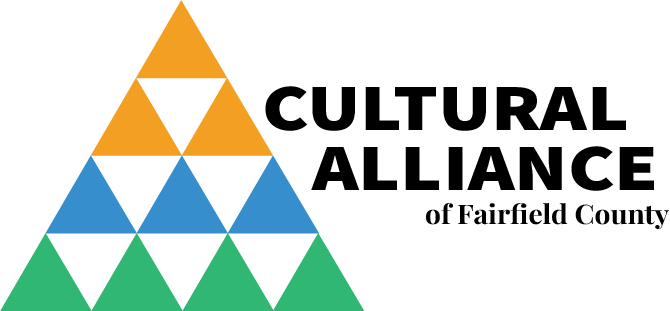1. Economic Impact of Nonprofit Arts & Culture Industry
 |
NATIONALAmericans for the Arts conducts a quinquennial survey of the the nation’s nonprofit arts and culture industry (the next survey has been delayed because of COVID until 2022). The last survey, Arts & Economic Prosperity 5 (AEP5), conducted in 2015, with results reported in 2017, was the largest to date. It found that the industry generated $166.3 billion in economic activity in 2015—$63.8 billion in spending by arts and cultural organizations and an additional $102.5 billion in event-related spending by their audiences. Other Key Findings included: ● The industry supported 4.6 million jobs and generated $27.5 billion in revenue to local, state, and federal governments—a yield well beyond their collective $5 billion in arts allocations. ● Money spent by nonprofit arts and cultural organizations supported a larger share of the U.S. workforce—0.83 percent—than the legal or public safety sectors. ● Based on the 212,691 audience surveys conducted, the typical arts attendee spent $31.47 per person, per event, beyond the cost of admission. Click on image to download the National Summary Report |
||||
|
|
STATETo conduct the AEP5, Americans for the Arts partnered with 250 local, regional, and statewide organizations. For CT, the Connecticut Department of Economic and Community Development (Office of the Arts) joined the study as one of the 250 partners. Based on 3,321 valid audience-intercept surveys collected from attendees to nonprofit arts and cultural performances, events, and exhibitions at 324 eligible nonprofit arts and cultural organizations across the State, the survey showed: ● The industry generated $797 million in economic activity ● It supported 23,114 jobs and generated $72.3 million in revenue to local, and state governments. For more detailed information, click the summary sheet to the left. |
||||
|
|
COUNTYIn Fairfield County, the Cultural Alliance of Fairfield County (in partnership with the Cultural Alliance of Western Connecticut) joined the study as one of the 250 partners, and collected 791 valid audience-intercept surveys from 72 eligible nonprofit arts and cultural organizations. Key findings included: ● Fairfield County Arts and Culture nonprofits generated $235 million in economic activity ● It supported 6,780 jobs and generated $20.6 million in revenue to local, and state governments. For more detailed information, click the summary sheet to the left. Download the Cultural Alliance’s own brochure with graphic illustrations on the economic impact of the arts and culture in our region. Click image at bottom left.
|
||||
2. Economic Impact of Nonprofit & For-profit Arts & Culture Sector
   |
NATIONALThe National Endowment for the Arts and the Bureau of Economic Analysis (BEA) through its Arts & Cultural Production Satellite Account (ASPSA) measure the the annual economic impact of arts and cultural production from 35 industries, both commercial and nonprofit, ranging from architectural services to sound recording. In 2019, arts and cultural economic activity accounted for $919.7 billion (4.3%) of GDP, increased 3.7 percent in 2019 after increasing 2.3 percent in 2018. (This is greater than the value added by industries such as construction, transportation, mining, and agriculture). See NEA’s U.S. Arts Economy in 2019: A National Summary Report for full details and larger versions of tables at left. Arts and cultural industries had 5.2 million workers on payroll with total compensation of $447 billion. This figure does not include self-employed arts workers. Leading growth industries include: web publishing and web streaming services (+11.8 percent), fine arts education (+9.8 percent), and landscape architectural services (+ 7.8 percent. Impact of COVID. In its March 30 2021 report, the NEA cites a January 2021 report developed by the Federal Emergency Management Agency (FEMA), Argonne National Laboratory, and the Arts Endowment. Contrasting the FEMA report’s unemployment numbers from the third quarter of 2020 with the ACPSA data from 2019 yields the following picture of the performing arts. • Musicians: In 2019, the unemployment rate was 1.1 percent representing 3,000 professionals. In the third quarter of 2020, the rate rose to 27.1 percent and 56,000 professionals. The National Assembly of State Arts Agencies has created state dashboards that allow users to see the value-added by arts and cultural industries to the state’s economy as well as key industries in the arts and cultural sector. The dashboards also show arts employment numbers for each state. In addition, BEA has produced ACPSA fact-sheets for each state. These and other resources, along with a national summary report by the Arts Endowment, are available as an arts data profile. |
|||
|
|
STATEThe National Assembly of State Arts Agencies has created state dashboards that allow users to see the value-added by arts and cultural industries to the state’s economy as well as key industries in the arts and cultural sector. The dashboards also show arts employment numbers for each state. For 2019, the arts and culture nonprofit and for-profit sectors added $9.77 billion to the state’s economy, equalling 3.4% of the states’ Gross State Product, and employed 56,865 people. Arts and Culture ranked 2nd among the comparison sectors, higher than construction, transportation and utilities. The Arts and Cultural Production Satellite Account contains detailed data on 36 key industries within the arts and cultural economy. These industries range from core arts and cultural production to industries supporting arts and cultural activities. The bar chart to the left shows the top five arts and cultural industries in 2019 by Value Added using Location Quotient in Connecticut. The BEA has produced ACPSA fact-sheets for each state. Click here, or on the image to the left to download the factsheet for Connecticut. Below: National and State Fact Sheet produced by Americans for the Arts. Click on images to download. NEWLY UPDATED FOR 2022 |
|||











